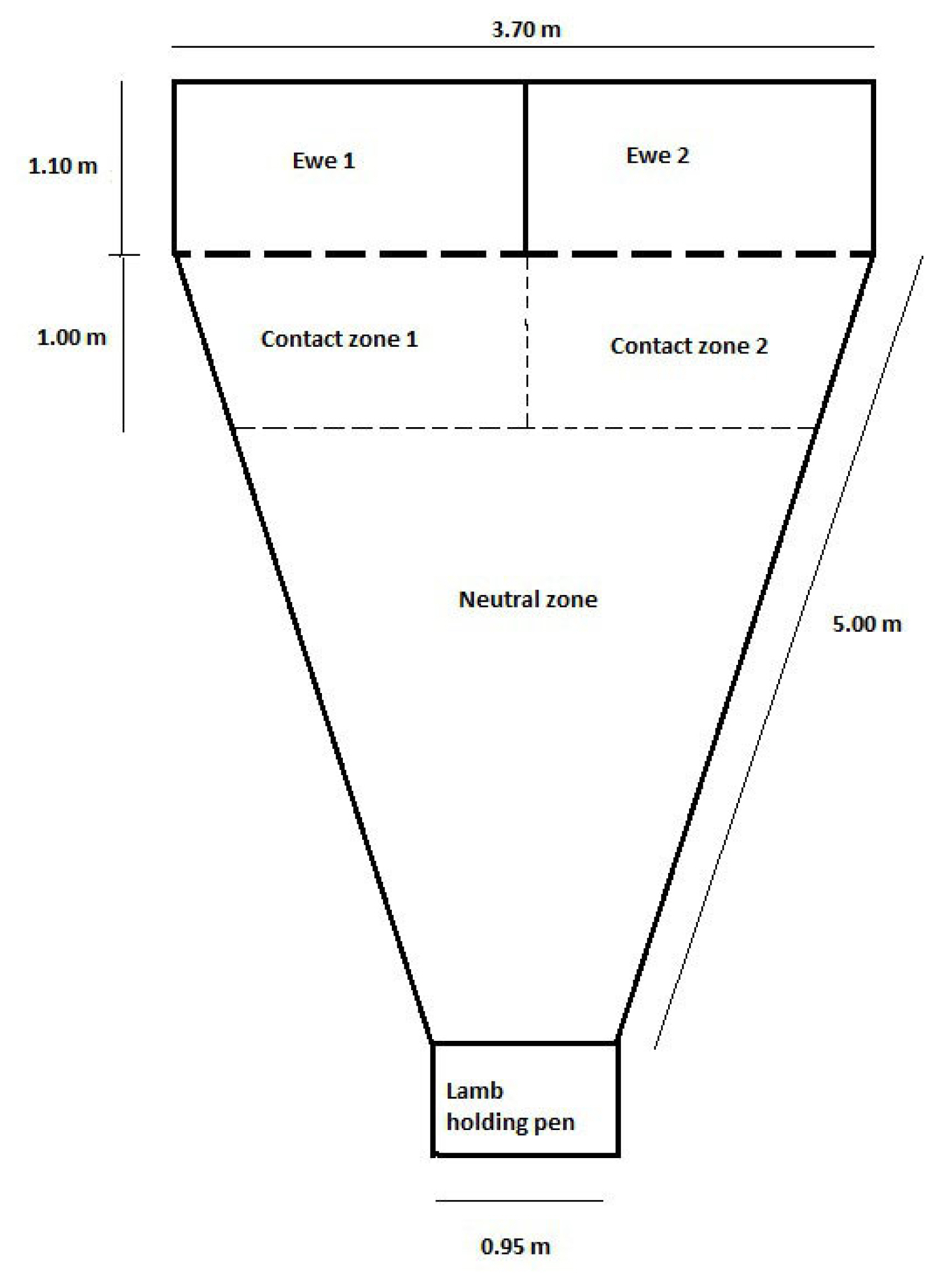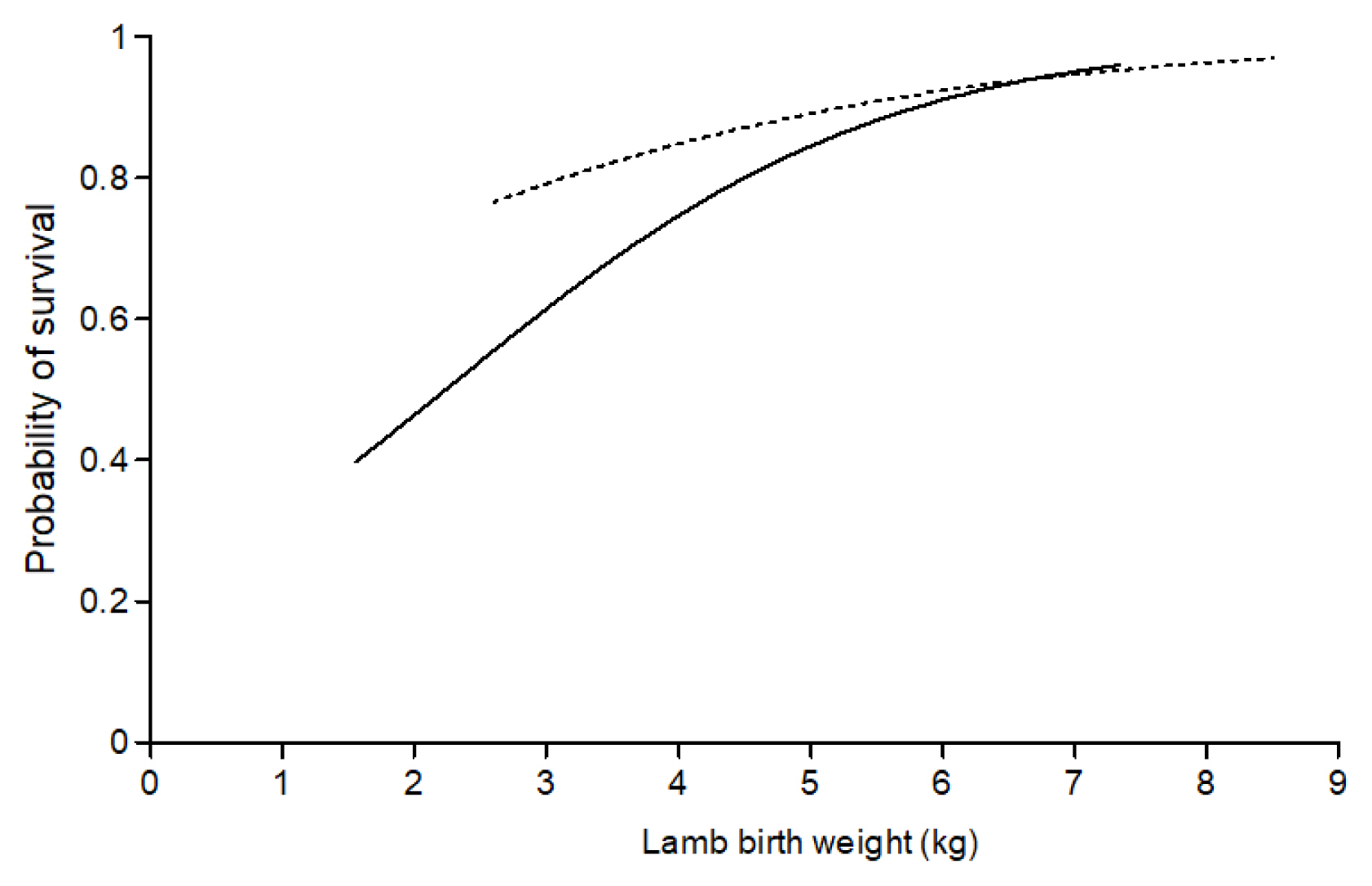3. Dwyer CM, Lawrence AB. A review of the behavioural and physiological adaptations of hill and lowland breeds of sheep that favour lamb survival. Appl Anim Behav Sci 2005; 92:235ŌĆō60.
https://doi.org/10.1016/j.applanim.2005.05.010

4. Nowak R, Porter RH, Levy F, Orgeur P, Schaal B. Role of mother-young interactions in the survival of offspring in domestic mammals. Rev Reprod 2000; 5:153ŌĆō63.
https://doi.org/10.1530/revreprod/5.3.153


5. Alexander G, Poindron P, Leneindre P, Stevens D, Levy F, Bradley L. Importance of the first hour post-partum for exclusive maternal bonding in sheep. Appl Anim Behav Sci 1986; 16:295ŌĆō300.
https://doi.org/10.1016/0168-1591(86)90122-X

7. Alexander G. What makes a good mother?: Components and comparative aspects of maternal behaviour in ungulates. Proc Aust Soc Anim Prod 1988; 17:25ŌĆō41.
8. Dwyer CM, Lawrence AB, Bishop SC, Lewis M. Ewe-lamb bonding behaviours at birth are affected by maternal undernutrition in pregnancy. Br J Nutr 2003; 89:123ŌĆō36.
https://doi.org/10.1079/BJN2002743


11. O'Connor CE, Jay NP, Nicol AM, Beatson PR. Ewe maternal behaviour score and lamb survival. Proc NZ Soc Anim Prod 1985; 45:159ŌĆō62.
13. Corner-Thomas RA, Kenyon PR, Morris ST, et al. A survey examining the New Zealand breed composition, management tool use and research needs of commercial sheep farmers and ram breeders. Proc Assoc Advmt Anim Breed Genet 2013; 20:18ŌĆō21.
14. Corner RA, Kenyon PR, Stafford KJ, West DM, Morris ST, Blair HT. Does ewe nutrition during pregnancy affect the behaviour of ewe lambs at 1 and 2 years of age? Proc NZ Soc Anim Prod 2005; 65:29ŌĆō32.
17. Kerslake JI, Everett-Hincks JM, Campbell AW. Lamb survival: a new examination of an old problem. Proc NZ Soc Anim Prod 2005; 65:13ŌĆō8.
18. Lopez-Villalobos N, Garrick DJ. Genetic parameter estimates for lamb survival in Romney sheep. Proc NZ Soc Anim Prod 1999; 59:121ŌĆō4.
19. Holst PJ, Fogarty NM, Stanley DF. Birth weights, meningeal lesions, and survival of diverse genotypes of lambs from Merino and crossbred ewes. Aust J Agric Res 2002; 53:175ŌĆō81.
https://doi.org/10.1071/AR01046

20. Geenty KG, Brien FD, Hinch GN, et al. Reproductive performance in the Sheep CRC Information Nucleus using artificial insemination across different sheep-production environments in southern Australia. Anim Prod Sci 2013; 54:715ŌĆō26.
https://doi.org/10.1071/AN11323

21. Lambe NR, Conington J, Bishop SC, Waterhouse A, Simm G. A genetic analysis of maternal behaviour score in Scottish Blackface sheep. Anim Sci 2001; 72:415ŌĆō25.
https://doi.org/10.1017/S1357729800055922

22. Everett-Hincks JM, Blair HT, Stafford KJ, Lopez-Villalobos N, Kenyon PR, Morris ST. The effect of pasture allowance fed to twin- and triplet-bearing ewes in late pregnancy on ewe and lamb behaviour and performance to weaning. Livest Prod Sci 2005; 97:253ŌĆō66.
https://doi.org/10.1016/j.livprodsci.2005.05.006

24. Nowak R. LambŌĆÖs bleats: Important for the establishment of the mother-young bond. Behaviour 1990; 115:14ŌĆō29.

26. Snowder GD, Glimp HA. Influence of breed, number of suckling lambs, and stage of lactation on ewe milk production and lamb growth under range conditions. J Anim Sci 1991; 69:923ŌĆō30.
https://doi.org/10.2527/1991.693923x


29. Dwyer CM, McLean KA, Deans LA, Chirnside J, Calvert SK, Lawrence AB. Vocalisations between mother and young in sheep: effects of breed and maternal experience. Appl Anim Behav Sci 1998; 58:105ŌĆō19.
https://doi.org/10.1016/S0168-1591(97)00113-5

30. Corner RA, Kenyon PR, Stafford KJ, West DM, Morris ST, Oliver MH. The effects of pasture availability for twin- and triplet-bearing ewes in mid and late pregnancy on ewe and lamb behaviour 12 to 24 h after birth. Animal 2010; 4:108ŌĆō15.
https://doi.org/10.1017/S1751731109990899


31. Gronqvist G, Hickson R, Corner-Thomas R, Kenyon P, Stafford K, Morris S. The effect of ewe nutrition and body condition during late-pregnancy on the behaviour of twin-bearing ewes and their lambs. Small Rumin Res 2016; 145:94ŌĆō102.
https://doi.org/10.1016/j.smallrumres.2016.10.029

32. Gronqvist G, Hickson R, Corner-Thomas R, Kenyon P, Stafford K, Morris S. The effect of ewe nutrition and body condition score during very late pregnancy and the perinatal period on the behaviour of twin-bearing ewes and their lambs. Proc NZ Soc Anim Prod 2015; 75:219ŌĆō22.
33. Gronqvist GV, Hickson RE, Corner-Thomas RA, Kenyon PR, Stafford KJ, Morris ST. Does ewe nutrition during pregnancy affect the neonatal behaviour of twin-born lambs? Proc NZ Soc Anim Prod 2016; 76:8ŌĆō13.
34. Gronqvist GV, Hickson RE, Corner-Thomas RA, Stafford KJ, Morris ST, Kenyon PR. The effect of mid-pregnancy nutrition and body condition score on the behaviour of triplet-bearing ewes and their lambs. Proc NZ Soc Anim Prod 2017; 77:143ŌĆō8.










 PDF Links
PDF Links PubReader
PubReader ePub Link
ePub Link Full text via DOI
Full text via DOI Download Citation
Download Citation Print
Print





